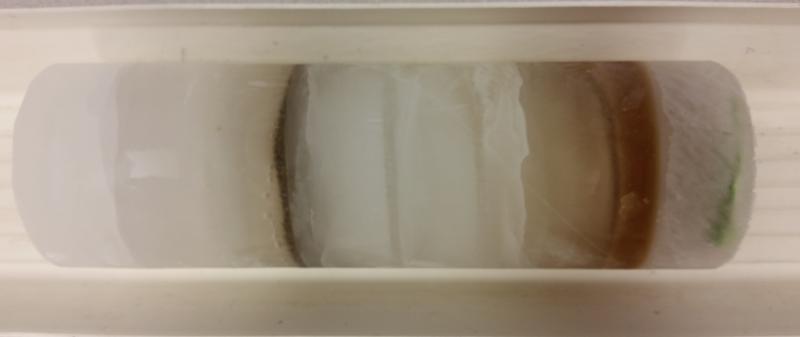Background Information
Ice cores provide scientists with a way to learn about environmental conditions in the past before people were around to write records. The benefit of drilling ice cores is that the cores can be taken back to the laboratory to analyze and, since a new layer is created each year, the more layers that scientists can observe the more years into the past that they can investigate. Each layer of ice provides information about the amount of snow that the glacier received in a given year. These layers also contain materials such as debris from forest fires and volcanoes, dust picked up by winds, and living materials such as pollen and insects. Some of these materials can be seen with the naked eye. Other materials, such as chemical tracers, cannot be seen with the naked eye and more sophisticated ways are used to analyze for these materials.
Lesson Plan Summary

BPCRC's Education and Outreach team created and field tested a comprehensive lesson plan designed to provide students with a simulation of the process that scientists use when analyzing ice cores. Included in the lesson plan are instructions on how to create your own classroom ice cores, as shown to the right.
Lesson Plan Resources
High Resolution Photographs of a Classroom Ice Core - Front Photo [pdf] - Back Photo [pdf]
A video explaining how to create classroom ice cores.
Videos and VR of Expeditions
Explore Mount Huascarán in Peru with an expedition from the Byrd Center using VR.
A video describing a recent expedition to Peru to collect cores to improve our understanding of El Niños. This video provides details that might not be necessary with a younger audience; educators should feel free to show only the portions that align with their lesson.
WOSU's Ice Core Learning Modules
[pdf] - Some links on this page are to Adobe .pdf files requiring Adobe Reader. If you need these files in a more accessible format, please contact contact@bpcrc.osu.edu.
